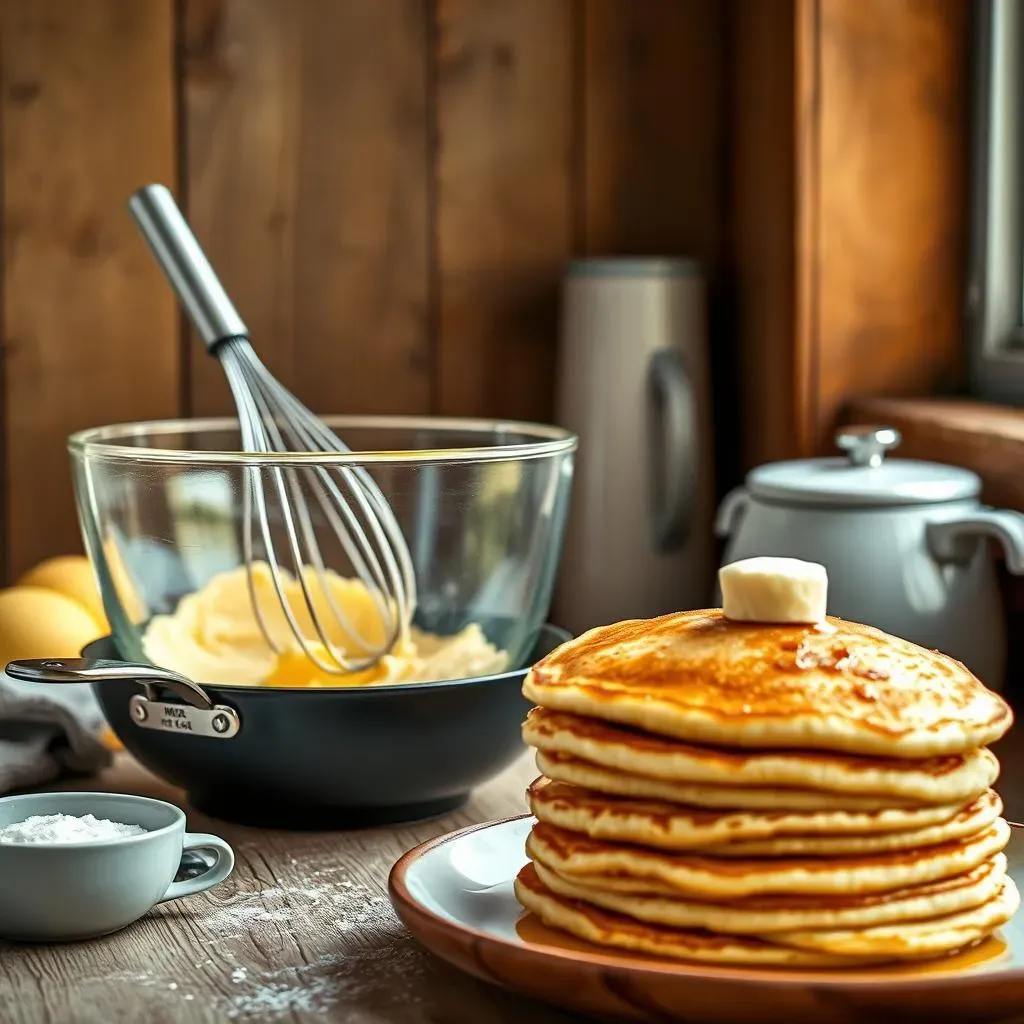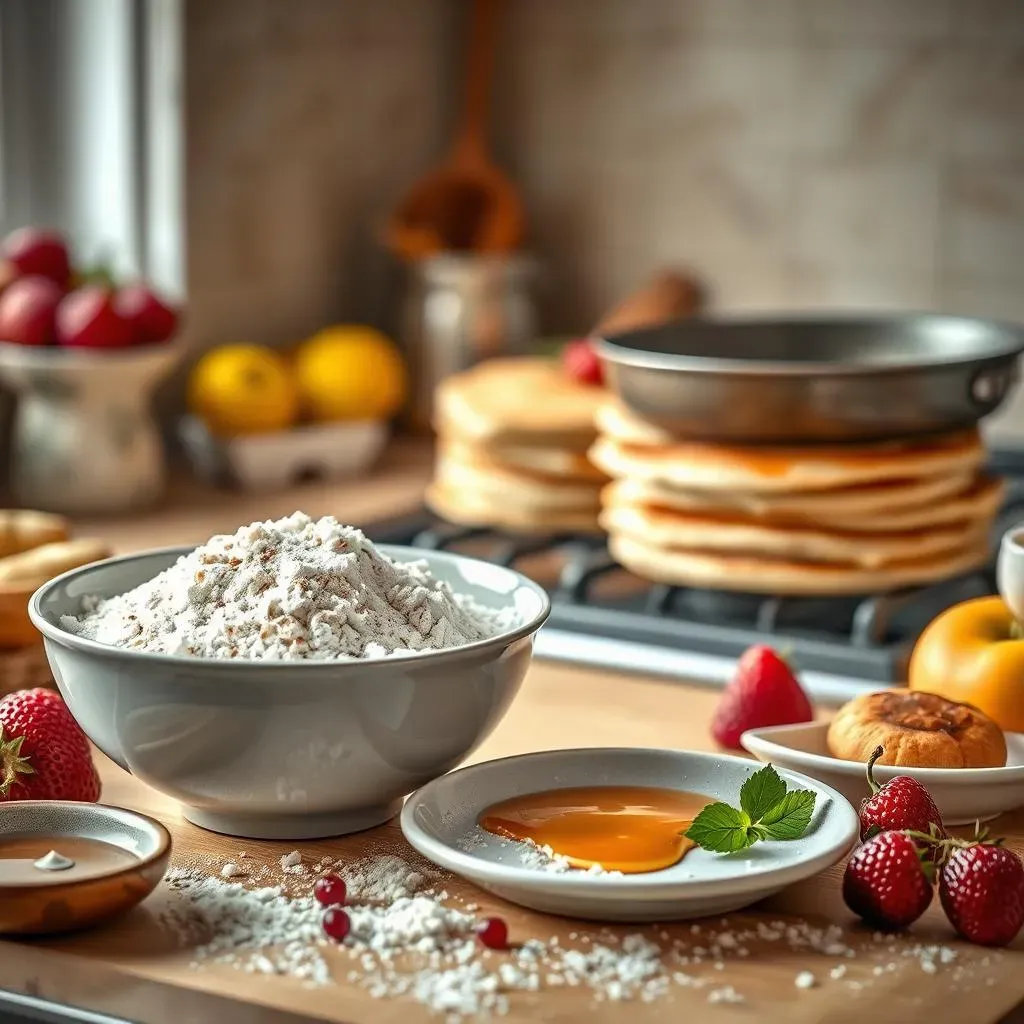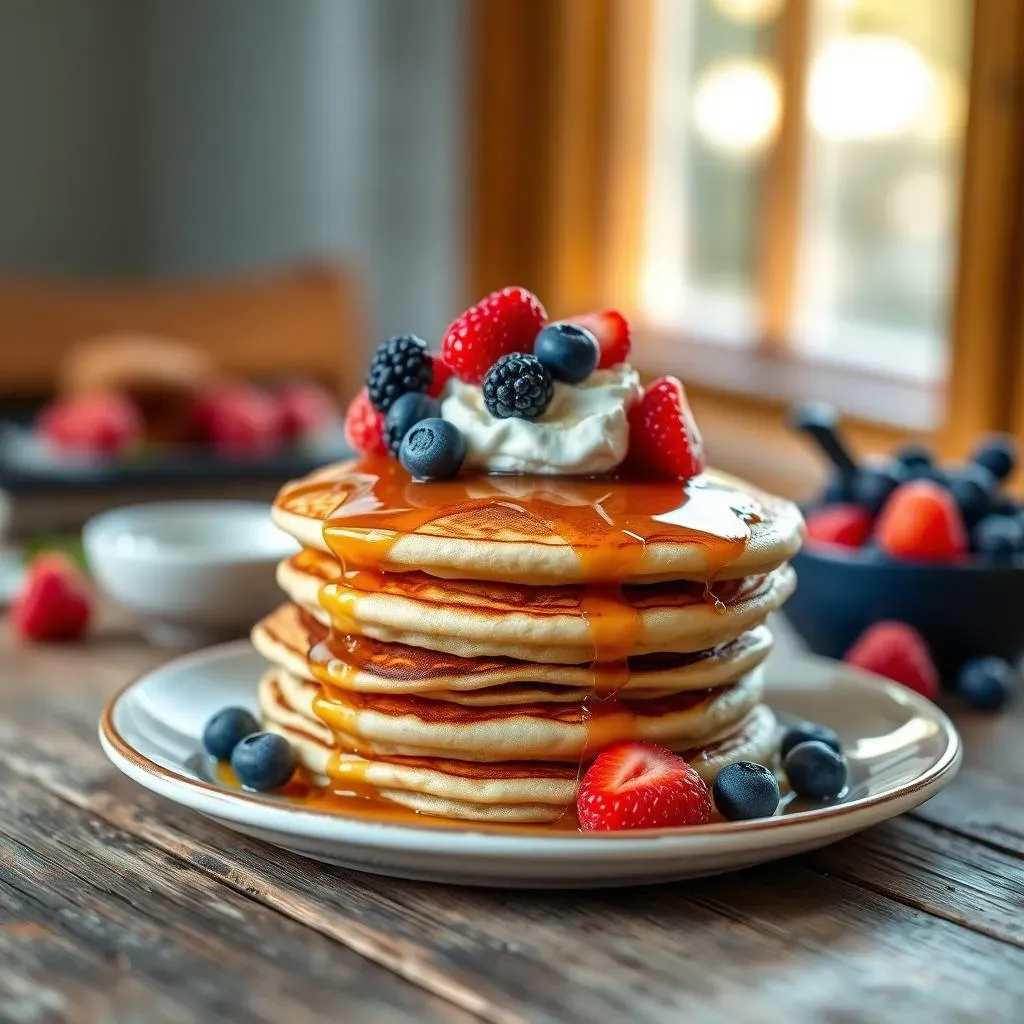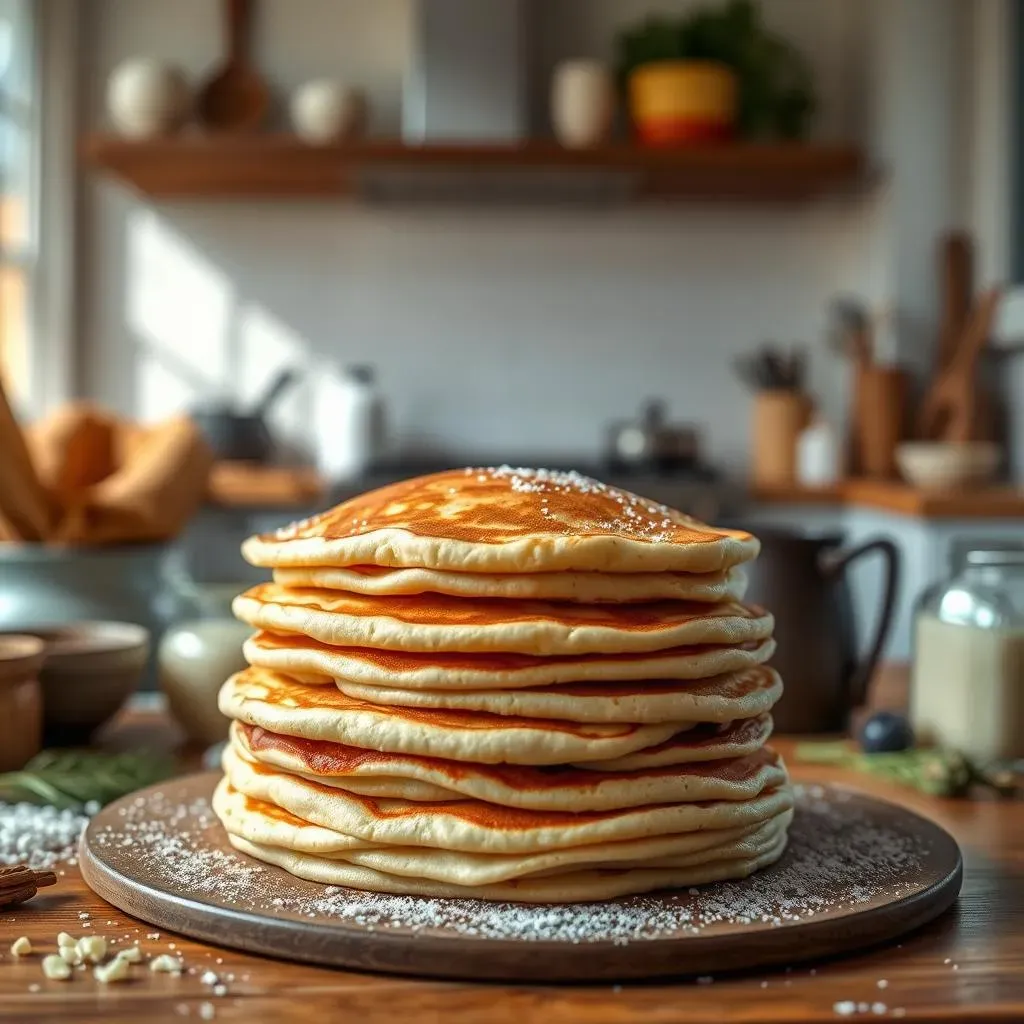Table of Contents
Are you tired of sacrificing flavor and texture for a gluten-free diet? Look no further! In this article, we'll show you how to make gluten-free pancakes that are not only delicious but also easy to prepare. Whether you're a seasoned chef or a beginner in the kitchen, our step-by-step guide will walk you through the process of creating fluffy and mouthwatering gluten-free pancakes. Learning how to make gluten-free pancakes is a game-changer for those with gluten intolerance or sensitivity, and with our simple recipe, you'll be enjoying a stack of golden brown pancakes in no time. Throughout this article, we'll cover the key points to get you started, from understanding the basics of gluten-free pancake mix to tips and tricks for making the fluffiest pancakes possible. So, if you're ready to learn how to make gluten-free pancakes and take your breakfast game to the next level, keep reading!
Learning How to Make GlutenFree Pancakes from Scratch
Learning How to Make GlutenFree Pancakes from Scratch
Getting Started with Gluten-Free Pancakes
Learning how to make gluten-free pancakes from scratch can seem intimidating, but with the right ingredients and techniques, you'll be enjoying a stack of fluffy pancakes in no time. The first step is to understand the basics of gluten-free flours and how they work together to create a delicious pancake. Gluten-free flours can be made from a variety of ingredients, including rice, almond, coconut, and cassava. Each of these flours has its own unique characteristics and uses, so it's essential to choose the right one for your pancakes.
To get started, you'll need to gather a few basic ingredients, including gluten-free flour, sugar, eggs, and milk. You'll also need a mixing bowl, whisk, and non-stick pan or griddle. With these ingredients and tools, you'll be ready to start making your gluten-free pancakes from scratch.
Gluten-Free Flour | Characteristics | Uses |
|---|---|---|
Rice Flour | Light, delicate, and neutral-tasting | Cakes, cookies, and pancakes |
Almond Flour | Nutty, dense, and high in protein | Cakes, cookies, and macarons |
Coconut Flour | High in fiber, dense, and absorbent | Baked goods, pancakes, and waffles |
Mixing and Cooking the Batter
Once you have your ingredients and tools, it's time to start mixing and cooking your gluten-free pancake batter. The key to making great gluten-free pancakes is to create a smooth, even batter that's not too thick or too thin. To achieve this, you'll need to mix your dry ingredients, including gluten-free flour, sugar, and salt, in a separate bowl from your wet ingredients, including eggs, milk, and any flavorings you're using.
When you're ready to cook your pancakes, heat a non-stick pan or griddle over medium heat and grease with a small amount of oil or cooking spray. Using a 1/4 cup measuring cup, scoop the batter onto the pan and cook for 2-3 minutes, until bubbles appear on the surface and the edges start to dry. Flip the pancakes and cook for an additional 1-2 minutes, until golden brown.
- Use a high-quality gluten-free flour that's designed for pancakes and waffles
- Don't overmix the batter, as this can create tough, dense pancakes
- Use the right amount of liquid, as too much can make the batter too thin and too little can make it too thick
- Cook the pancakes over medium heat, as high heat can burn the outside before the inside is fully cooked
Tips and Variations for Making Gluten-Free Pancakes
Now that you've mastered the basics of making gluten-free pancakes from scratch, it's time to get creative and experiment with different flavors and ingredients. One of the best things about gluten-free pancakes is that they can be customized to suit any taste or dietary need. Try adding different flavorings, such as vanilla, cinnamon, or nutmeg, to the batter for a unique twist. You can also add in different mix-ins, such as chocolate chips, nuts, or dried fruit, to create a delicious and varied pancake.
For a vegan version of gluten-free pancakes, simply replace the eggs with a flax egg or mashed banana and use a non-dairy milk, such as almond or soy milk. You can also experiment with different types of gluten-free flours, such as rice, almond, or coconut, to create a unique texture and flavor.
Understanding the Basics of GlutenFree Pancake Mix for Making GlutenFree Pancakes
Understanding the Basics of GlutenFree Pancake Mix for Making GlutenFree Pancakes
What is Gluten-Free Pancake Mix?
Gluten-free pancake mix is a blend of ingredients designed to replace traditional wheat flour in pancake recipes. This mix typically includes a combination of gluten-free flours, such as rice, almond, or coconut flour, as well as other ingredients like sugar, salt, and leavening agents. The exact composition of gluten-free pancake mix can vary depending on the brand or recipe, but the goal is always to create a mix that can be used to make delicious and fluffy pancakes without the use of gluten.
One of the benefits of using a gluten-free pancake mix is that it can simplify the process of making gluten-free pancakes. Rather than having to measure out individual ingredients and mix them together, you can simply use a pre-mixed blend and add your own wet ingredients, such as eggs and milk. This can be especially helpful for those who are new to gluten-free baking or who are short on time.
Gluten-Free Flour | Proportion | Function |
|---|---|---|
Rice Flour | 50% | Provides structure and texture |
Almond Flour | 20% | Adds protein and flavor |
Coconut Flour | 10% | Absorbs liquid and adds fiber |
How to Choose the Right Gluten-Free Pancake Mix
With so many different gluten-free pancake mixes available, it can be overwhelming to choose the right one. Here are a few factors to consider when selecting a gluten-free pancake mix: look for a mix that is made with high-quality, gluten-free ingredients and has a good balance of protein, fiber, and flavor. Also, consider any dietary restrictions you may have, such as dairy-free or vegan, and choose a mix that meets your needs.
Additionally, read reviews and do some research to find a mix that has been well-reviewed by others and is known for producing delicious and fluffy pancakes. By taking the time to choose the right gluten-free pancake mix, you can ensure that your pancakes turn out light, fluffy, and full of flavor.
- Look for a mix that is made with high-quality, gluten-free ingredients
- Consider any dietary restrictions you may have, such as dairy-free or vegan
- Read reviews and do some research to find a mix that has been well-reviewed by others
Tips and Tricks for Making the Fluffiest How to Make GlutenFree Pancakes
Tips and Tricks for Making the Fluffiest How to Make GlutenFree Pancakes
Understanding the Importance of Leavening Agents
When it comes to making the fluffiest gluten-free pancakes, leavening agents play a crucial role. Leavening agents, such as baking powder and baking soda, help to release carbon dioxide gas, which gets trapped in the batter, causing the pancakes to rise. However, when working with gluten-free flours, it's essential to use the right type and amount of leavening agents to achieve the desired texture.
To ensure that your gluten-free pancakes are light and fluffy, make sure to use a combination of baking powder and baking soda. The ratio of baking powder to baking soda will depend on the type of gluten-free flour you're using, so be sure to experiment and find the perfect balance for your recipe.
Leavening Agent | Function | Recommended Ratio |
|---|---|---|
Baking Powder | Releases carbon dioxide gas, causing the pancakes to rise | 1-2 teaspoons per 1 cup of gluten-free flour |
Baking Soda | Helps to neutralize the acidity of the batter, allowing the pancakes to rise | 1/4 teaspoon per 1 cup of gluten-free flour |
Using the Right Type of Gluten-Free Flour
The type of gluten-free flour used can significantly impact the texture and flavor of the pancakes. Some gluten-free flours, such as almond flour and coconut flour, can be dense and heavy, while others, such as rice flour and cassava flour, can be light and airy. To make the fluffiest gluten-free pancakes, it's essential to choose a gluten-free flour that is designed for pancakes and waffles.
Look for a gluten-free flour that is made from a combination of rice flour, potato starch, and tapioca flour. These flours will provide a light and airy texture, while also helping to bind the ingredients together. Avoid using gluten-free flours that are high in protein, such as almond flour and coconut flour, as they can make the pancakes dense and heavy.
- Choose a gluten-free flour that is designed for pancakes and waffles
- Avoid using gluten-free flours that are high in protein
- Experiment with different ratios of gluten-free flours to find the perfect balance for your recipe
Don't Overmix the Batter
One of the most common mistakes when making gluten-free pancakes is overmixing the batter. Overmixing can cause the gluten-free flours to become tough and dense, resulting in pancakes that are heavy and flat. To avoid this, make sure to mix the wet and dry ingredients separately and gently fold them together until just combined.
It's also essential to avoid overmixing the batter when adding in any mix-ins, such as chocolate chips or nuts. Instead, gently fold them into the batter until they are evenly distributed. By avoiding overmixing, you'll be able to create pancakes that are light, fluffy, and full of flavor.
Common Mistakes to Avoid When Making How to Make GlutenFree Pancakes at Home
Common Mistakes to Avoid When Making How to Make GlutenFree Pancakes at Home
Making gluten-free pancakes at home can be a fun and rewarding experience, but it's easy to make mistakes that can affect the texture and flavor of your pancakes. One of the most common mistakes is using the wrong type of gluten-free flour. Some gluten-free flours, such as almond flour and coconut flour, can be dense and heavy, while others, such as rice flour and cassava flour, can be light and airy. To avoid this mistake, make sure to choose a gluten-free flour that is designed for pancakes and waffles.
Gluten-Free Flour | Characteristics | Suitability for Pancakes |
|---|---|---|
Rice Flour | Light, delicate, and neutral-tasting | Excellent |
Almond Flour | Nutty, dense, and high in protein | Poor |
Coconut Flour | High in fiber, dense, and absorbent | Poor |
Another common mistake is overmixing the batter. Overmixing can cause the gluten-free flours to become tough and dense, resulting in pancakes that are heavy and flat. To avoid this, make sure to mix the wet and dry ingredients separately and gently fold them together until just combined. Additionally, be careful not to overmix the batter when adding in any mix-ins, such as chocolate chips or nuts.
- Choose a gluten-free flour that is designed for pancakes and waffles
- Avoid overmixing the batter
- Don't overmix the batter when adding in mix-ins
Conclusion: Mastering the Art of How to Make Gluten-Free Pancakes
In conclusion, making gluten-free pancakes is a breeze with the right ingredients and techniques. By following our simple recipe and tips, you'll be well on your way to creating delicious and fluffy gluten-free pancakes that everyone will love. Remember, the key to perfecting how to make gluten-free pancakes is to experiment with different ingredients and flavors until you find the combination that works best for you. With practice and patience, you'll be a gluten-free pancake pro in no time, and your breakfast routine will never be the same. So go ahead, get creative, and start flipping those gluten-free pancakes – your taste buds will thank you!